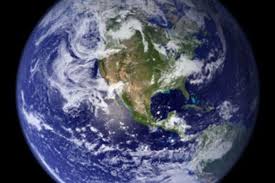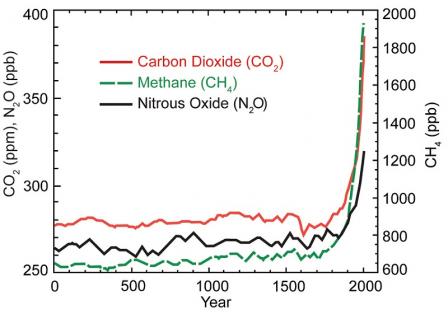
Climate change is serious and the effects are widespread, felt locally and globally. You can categorise the effects into environmental, social and economic. A good way to frame your answers is to visualise how higher sea levels and erratic weather conditions affect people and communities. For example, how will higher sea levels affect low-lying countries like Bangladesh? Bangladesh is an example of a developing country and so has less financial resources to deal with effects. This would make the consequences of flooding more serious. How would a drought affect farmers in already hot countries like Ethiopia? Less agricultural productivity means less revenue for the economy and less employment. Think about how the effects of climate change affect developing and developed countries differently.
Environmental
- Agricultural effects:
a) Crop yields are expected to decrease for all major world crops. For countries such as in West Africa, where food security is already an issue, Cycles of drought and flooding will impact society forcing populations to migrate away from unproductive agricultural land due to a degree rise in average temperatures combined with substantial changes in rainfall and humidity.
b) Increase in desertification (spread of desert conditions in arid regions) rendering land unusable for farming. Combine this with soil degradation and erosion meaning a lot of the land is virtually useless for agriculture.
c) Crops will be wiped out in low-lying areas prone to flooding. Bangladesh is located in the low-lying Ganges Delta between India to the west, and Burma to the east, and boasts some of the most fertile agricultural plains in the world. Most of the country is lower than 12 metres above sea level and extremely flood-prone. Less cash crops (crops available on the world market) will mean higher prices making their exports less competitive.
d) Longer growing seasons in some areas, for example the UK meaning more crops can be grown.
It helps to mention countries in your answers:
A good example of a developing countries affected by droughts – Haiti (Half of all Haitians work in agriculture, which is becoming increasingly unstable with changes in climate patterns. Unseasonable droughts have caused widespread crop failure) recent years.
2) Water and Ice
a) When glaciers melt, mass movements occur. This is a large downscale movement of rocks and material.
b) In mountainous regions, melting glaciers are impacting on freshwater ecosystems. Himalayan glaciers feed great Asian rivers such as the Yangtze, Yellow, Ganges, Mekong and Indus. Over a billion people rely on these glaciers for drinking water, sanitation, agriculture and hydroelectric power. This can be a social effect too because it affects humans.
c) Less fresh water will be available in coastal areas as it will mix with sea water, which is salty.
d) Effects on marine wildlife – oceans are excellent carbon storing machines, but higher carbon dioxide concentrations than normal coupled with an increase in sea temperatures make the oceans acidic. Coral reefs are particularly at risk. Sensitive coral and algae that live on it are starved of oxygen causing the eventual death of coral. Example – Great Barrier Reef in Australia. If global warming remains on its upward path, by 2050 just 5% of Australia’s Great Barrier Reef – the world’s largest coral reef – will remain.
e) Other wildlife – melting glaciers and polar ice caps in the Arctic mean a loss of habitat for polar bears and seals. Climate change has a wide range of negative effects on a series of different animals from rhinos to elephants. You can research how (reasons include changing weather patterns affecting the ecosystem they depend on, wildfires in forests, water and food shortages).
f) Regulation of Earth’s temperatures – the Antarctic ice sheet is the largest single mass of ice on Earth. It covers almost 14 million sq km and contains 30 million cubic km of ice – accounting for around 90% of all fresh water on the Earth’s surface. This ice plays a vitally important role in influencing the world’s climate, reflecting back the sun’s energy and helping to regulate global temperatures. This reflective capacity is called the albedo effect.
You must be aware that there are MANY other environmental reasons. You won’t, and indeed can’t be expected to write down EVERY reason in an exam answer. But you will get marks for listing examples and developing points (explaining=why).






